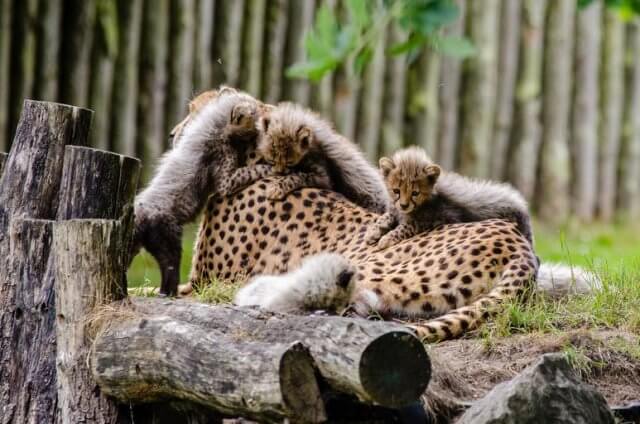The Top 7 Challenges of Caring for Captive Cheetahs
Caring for Captive Cheetahs
 Cheetahs, known for their incredible speed and graceful appearance, are one of the most captivating big cats in the world. Unfortunately, due to habitat loss, poaching, and illegal wildlife trade, their population has drastically declined in the wild. To ensure their survival, many conservation organizations and zoos have taken on the responsibility of caring for captive cheetahs. However, this task comes with its own set of challenges. In this article, we will explore the top 7 challenges faced by those who care for captive cheetahs.
Cheetahs, known for their incredible speed and graceful appearance, are one of the most captivating big cats in the world. Unfortunately, due to habitat loss, poaching, and illegal wildlife trade, their population has drastically declined in the wild. To ensure their survival, many conservation organizations and zoos have taken on the responsibility of caring for captive cheetahs. However, this task comes with its own set of challenges. In this article, we will explore the top 7 challenges faced by those who care for captive cheetahs.
1. Providing Sufficient Space
Cheetahs are built for speed and require ample space to run and exercise. In captivity, providing a suitable environment that mimics their natural habitat is crucial for their physical and mental well-being. However, space constraints in zoos and wildlife sanctuaries often pose a challenge. Cheetahs need large enclosures with enough room to sprint and roam freely. Without adequate space, they may become stressed, leading to various health issues.
2. Meeting Dietary Needs
Cheetahs have specific dietary requirements that must be met to ensure their optimal health. In the wild, their diet primarily consists of small to medium-sized ungulates, such as gazelles and impalas. Replicating this diet in captivity can be challenging and expensive. Providing a balanced diet that includes the right amount of protein, fat, and other essential nutrients is crucial. Additionally, cheetahs are known to be picky eaters, making it even more difficult to meet their dietary needs.
3. Managing Reproduction
Reproduction is a complex process for cheetahs, and managing it in captivity can be challenging. Female cheetahs have a limited window of fertility, making successful breeding difficult. Additionally, male cheetahs often exhibit aggressive behavior during mating, which can pose a risk to both the female and the caretakers. Proper management of breeding programs and careful monitoring of cheetah pairs are essential to ensure successful reproduction and genetic diversity.
4. Preventing Inbreeding
Inbreeding is a significant concern when caring for captive cheetahs. With a limited number of cheetahs in captivity, the gene pool becomes increasingly restricted, leading to genetic abnormalities and reduced fertility. To prevent inbreeding, conservation organizations and zoos must carefully manage breeding programs and exchange cheetahs between institutions to maintain genetic diversity.
5. Addressing Health Issues
Cheetahs are susceptible to various health issues, both in the wild and in captivity. Stress-related conditions, such as gastrointestinal problems and immune system disorders, are common among captive cheetahs. Additionally, they are prone to respiratory infections and dental issues. Providing regular veterinary care and monitoring the health of captive cheetahs is crucial to prevent and address these health issues.
6. Ensuring Behavioral Enrichment
Cheetahs are highly intelligent and active animals. In captivity, they require mental and physical stimulation to prevent boredom and behavioral problems. Providing behavioral enrichment, such as puzzle feeders, toys, and opportunities for social interaction, is essential for their well-being. However, coming up with new and engaging enrichment activities can be a challenge, requiring creativity and constant innovation.
7. Educating the Public
One of the key challenges in caring for captive cheetahs is educating the public about their conservation needs. Many people are unaware of the threats cheetahs face in the wild and the importance of captive breeding programs for their survival. Conservation organizations and zoos play a vital role in raising awareness and promoting conservation efforts. However, effectively communicating the message and engaging the public can be a daunting task.
Summary
Caring for captive cheetahs comes with a unique set of challenges. Providing sufficient space, meeting dietary needs, managing reproduction, preventing inbreeding, addressing health issues, ensuring behavioral enrichment, and educating the public are all crucial aspects of cheetah care. By understanding and addressing these challenges, conservation organizations and zoos can contribute to the long-term survival of this magnificent species.
Read More About Cheetah’s From Wikipedia



